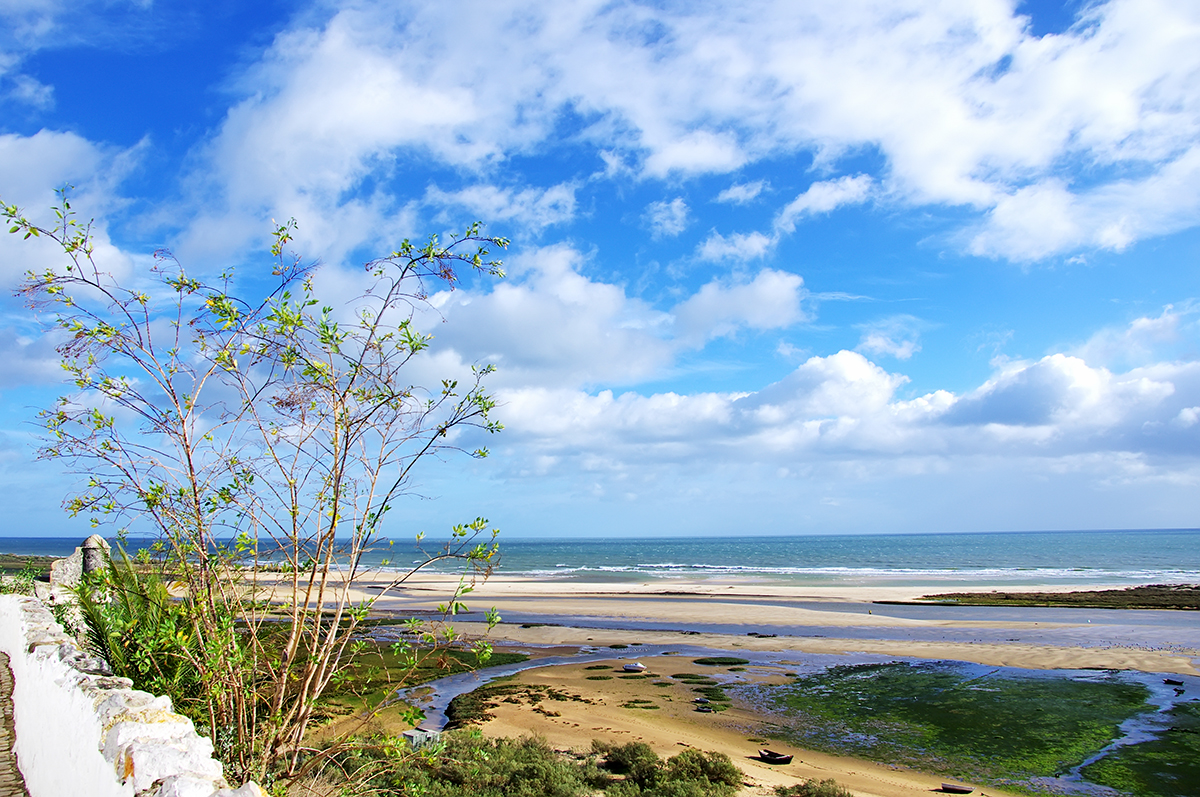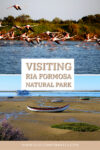The Algarve is a popular destination in Portugal known for its picturesque beaches and coastal towns. It’s also home to the Ria Formosa Natural Park, which is known for its rich biodiversity.
Most people visiting the Algarve head to the west to see the limestone cliffs and caves. But you’re missing out if you skip the east of the Algarve, where the beautiful Ria Formosa is located.
The Ria Formosa Natural Park is still a somewhat underrated destination in the Algarve.
There, you can swim in some quiet lagoons, relax on stunning beaches, and see the local wildlife, like flamingos and chameleons.
Things to Do in Ria Formosa Natural Park
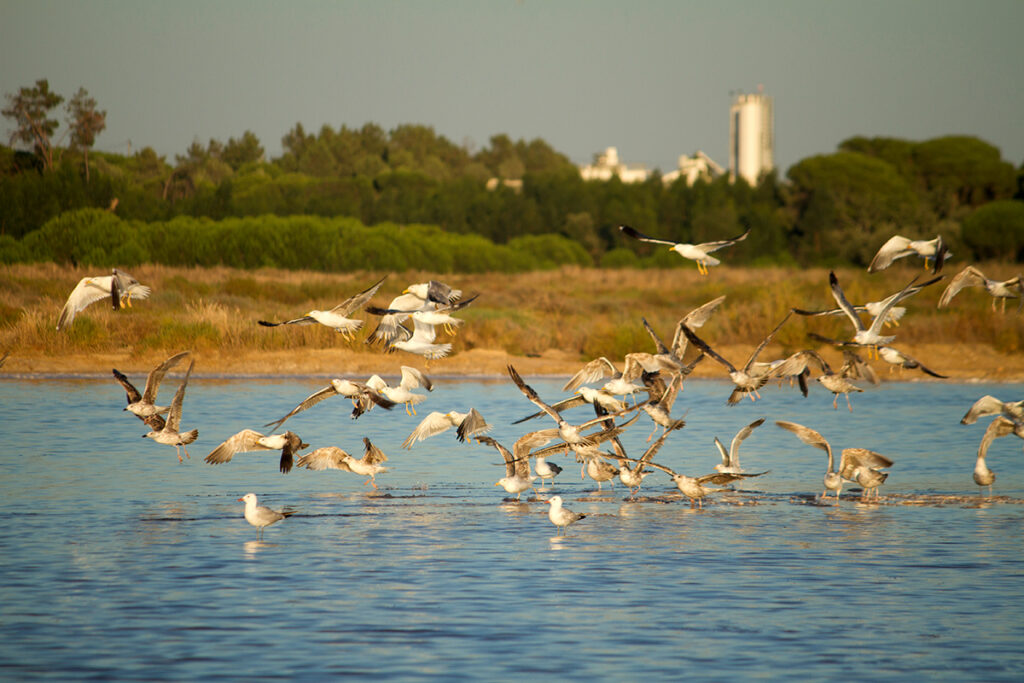
Ria Formosa is a natural park that stretches over 180 square kilometers (almost 45,000 acres) along the southern coast of Portugal. It’s a labyrinth of lagoons, marshlands, and barrier islands. The Natural Park starts in the west near Faro and extends to the east to Cacela Velha, close to Tavira.
The park is a crucial stopover for birds migrating between Europe and Africa. It’s not just for the birds, though. The park is home to a wide range of flora and fauna, making it an area of diverse ecosystems.
Lagoons
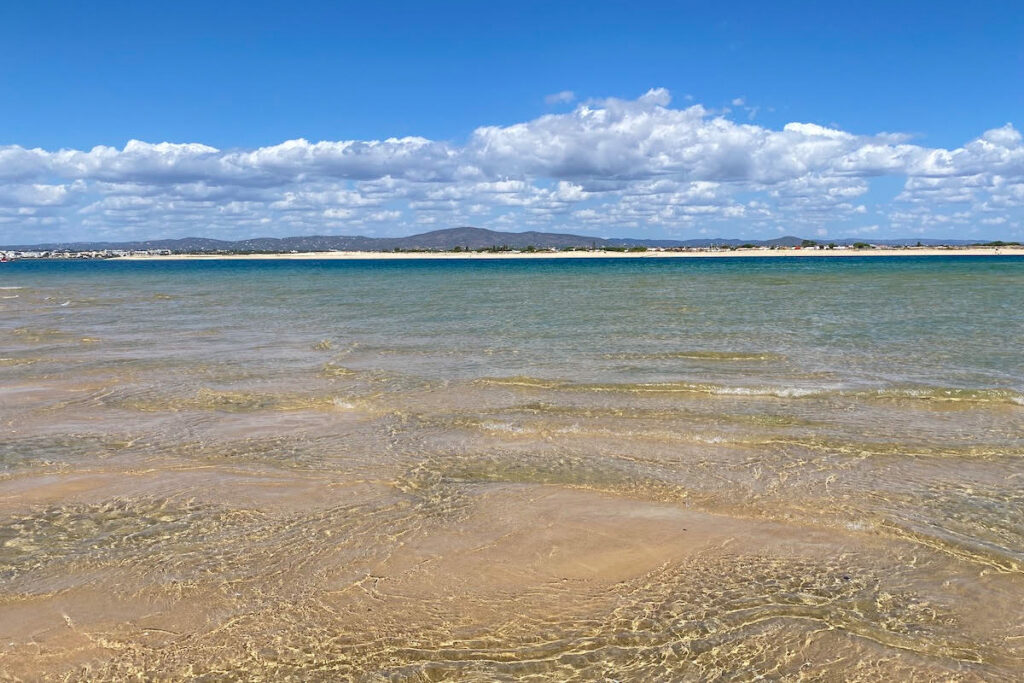
The lagoons in Ria Formosa are shallow bodies of water that are separated from the sea by the park’s barrier islands. It’s a unique environment where saltwater and freshwater mix.
Did you know that water like this, which has a higher salt level than fresh water but less than seawater, is called brackish water?
Anyway, this brackish water is a hotspot for biodiversity. It’s a vital breeding ground for marine life and acts as feeding grounds for various bird species.
The lagoons are also a great place for watersports, like kayaking or paddleboarding, since the water is calmer than in the ocean. This is a great way to combine wildlife spotting with some sports. You can paddle out into the lagoon and try to spot fish underneath you or birds above you.
Marshlands
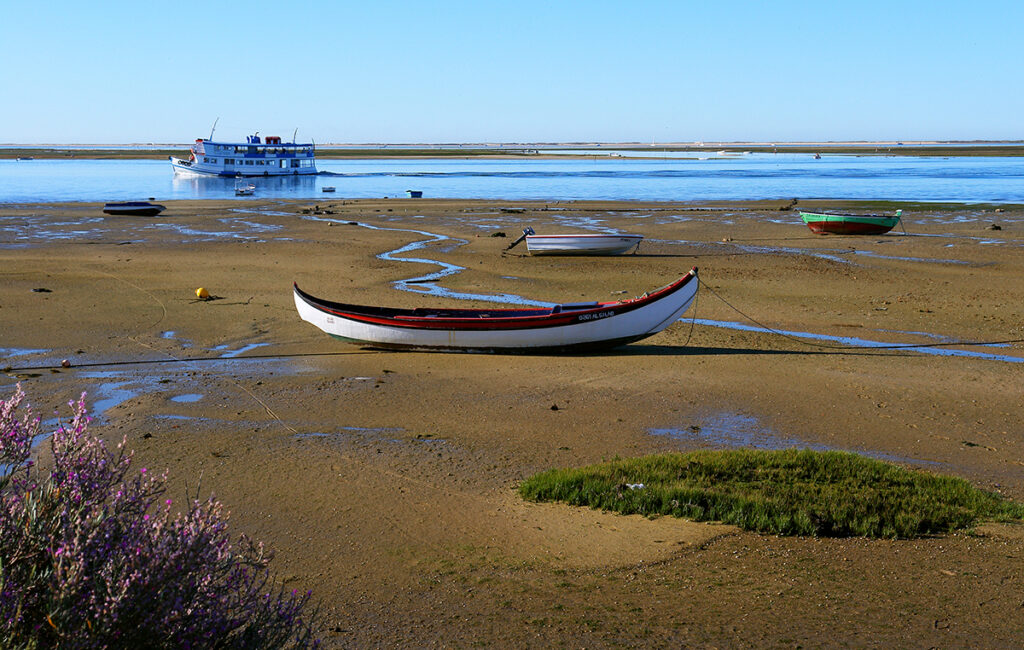
The marshlands in Ria Formosa are a vibrant ecosystem that is home to unique plants and flowers. These areas have plants that can tolerate salty seawater. Some plants in the marshlands even act as natural filters, trapping pollutants like pesticides.
Marshlands are among the most biodiverse spots on Earth. They are home to many different species of plants and animals.
And here’s something you might find interesting: the marshlands in Ria Formosa have been classified as a Ramsar site. That means they’re considered wetlands of international importance.
So, if you want to see what an important marshland looks like, Ria Formosa is the perfect place for it.
Barrier Islands
The barrier islands in Ria Formosa act as a protective shield for the delicate ecosystems of the lagoons and marshlands. There are six inlets, connecting the National Park to the Atlantic Ocean. Five of these inlets are natural and the sixth is manmade to grant easier access to the port of Faro.
The most popular barrier islands are Faro Island, Culatra Island, and Armona Island. These islands are not just known for their crucial role in the park’s biodiversity but also for their picturesque beaches.
While many of the barrier islands in Ria Formosa have developed areas with buildings, the majority of the land remains largely undisturbed.
Some islands have a small community of permanent residents. Others come to life mainly during the holiday season when locals and tourists go to the islands to enjoy the natural beauty.
How To Visit The Ria Formosa National Park
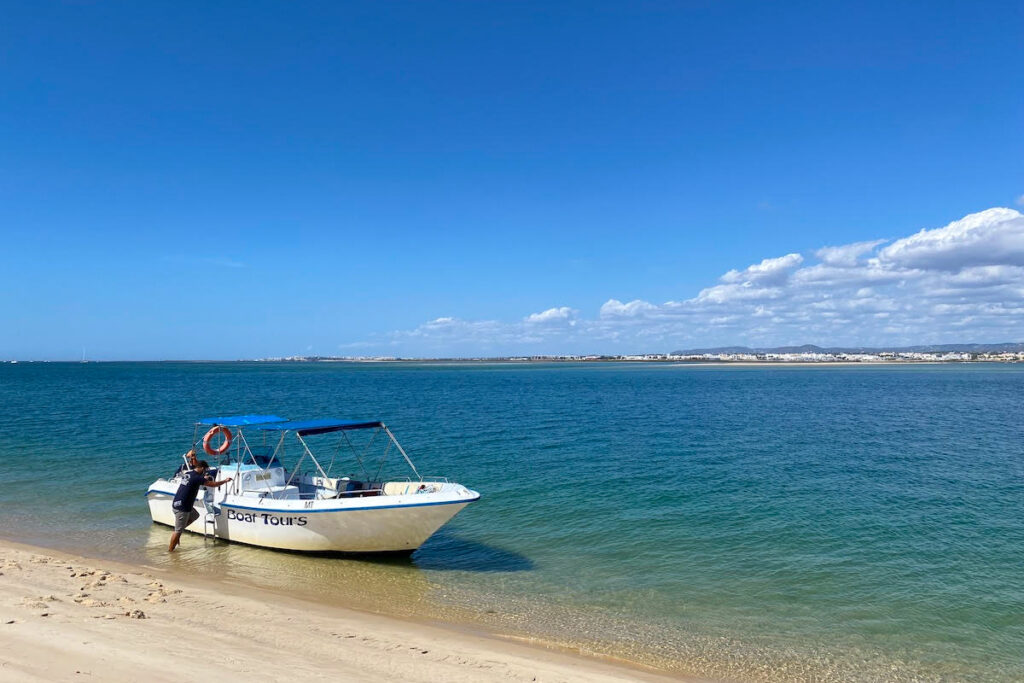
In order to really visit this diverse natural park, you need to spend at least a few days in the Algarve. A day tour from Lisbon to the Algarve just isn’t enough time to fully explore the Ria Formosa.
You can visit the Ria Formosa by boat or by hiking through the marshlands and dunes on dedicated walking paths.
The best way to visit is from one of the coastal towns in the Algarve. The most popular towns on the coast are Faro, Olhão, and Tavira.
Visiting Ria Formosa From Faro
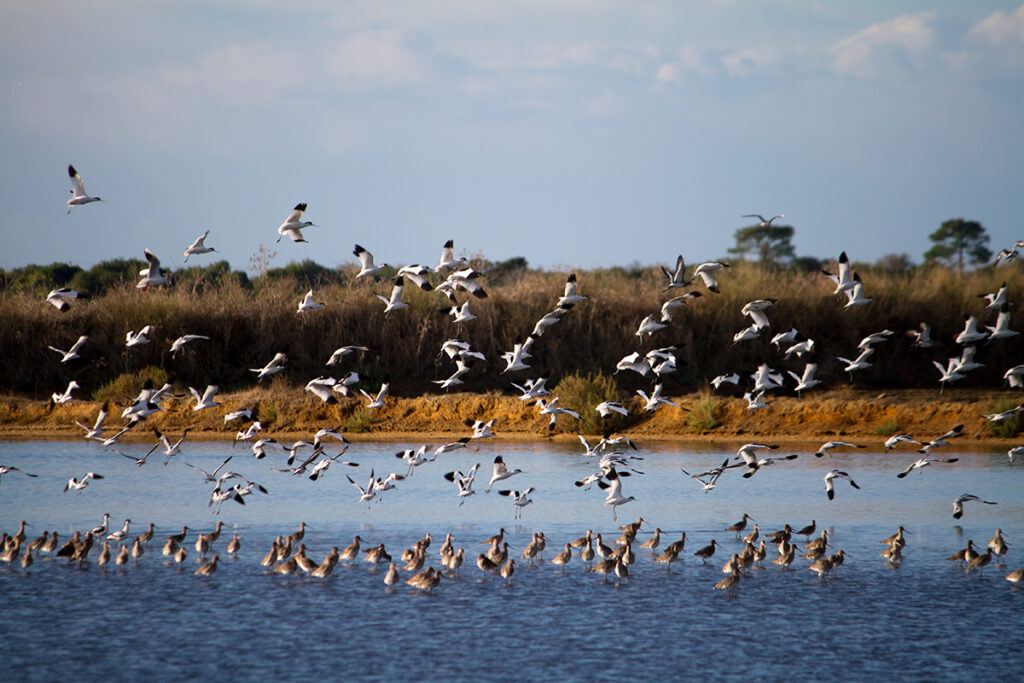
Faro is the biggest city in the Algarve and the only city in the region with an international airport. There are also good train connections from other Portuguese cities to Faro. It’s even possible to get to Faro from the south of Spain by bus. It’s the most accessible gateway to the Ria Formosa Natural Park.
Visiting Ria Formosa from Faro is a great option if you want to combine wildlife spotting with the perks of a city. You can stroll through the beautiful old town of Faro which is surrounded by city walls, have a drink at the marina while watching the hustle and bustle of city life, and then head out to Ria Formosa on a boat tour.
Since Faro is the largest and most visited city from which you can explore Ria Formosa, it also offers the most tour options.
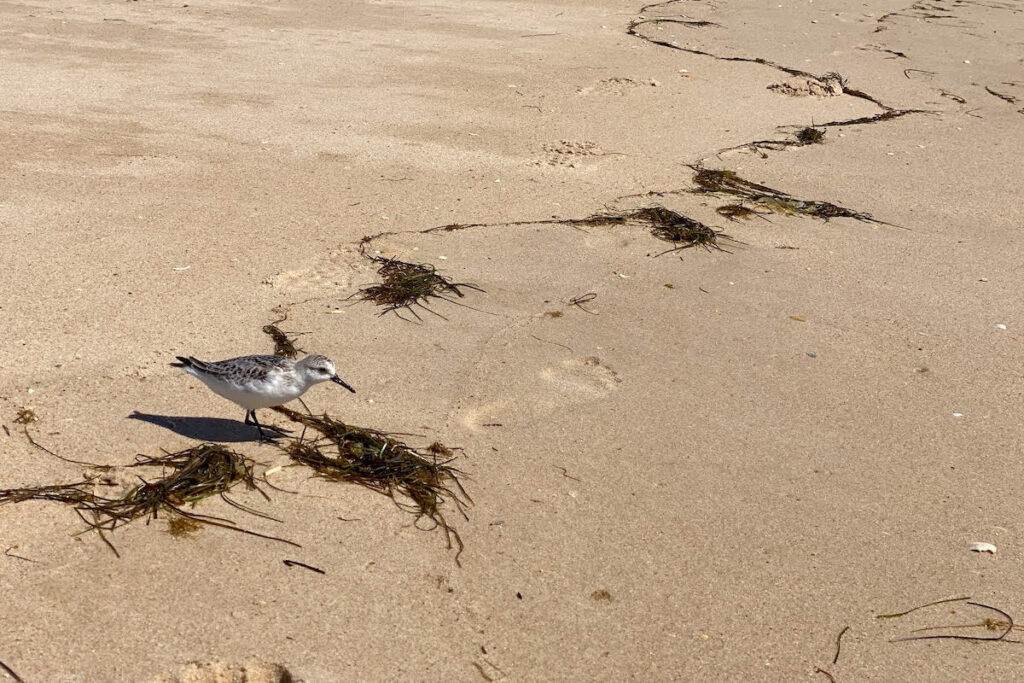
Taking a tour is definitely the best way to see the natural park since it’s only accessible by boat from Faro. A knowledgeable tour guide will point out wildlife as you cruise through the lagoons.
After wildlife spotting you can also take a ferry to Faro Island. On this island is Faro Beach where you can go for a swim or enjoy the sunset over the Atlantic Ocean.
Best Tours From Faro
Faro has some excellent tour options to explore the Ria Formosa. The best wildlife tour is the Eco-Friendly Ria Formosa Bird Watching in Solar Boat tour. On this tour, you’ll get detailed information about the local flora and fauna. One of the perks of this tour is the included use of their binoculars. This saves you having to buy or bring your own.
Visiting Ria Formosa From Olhão
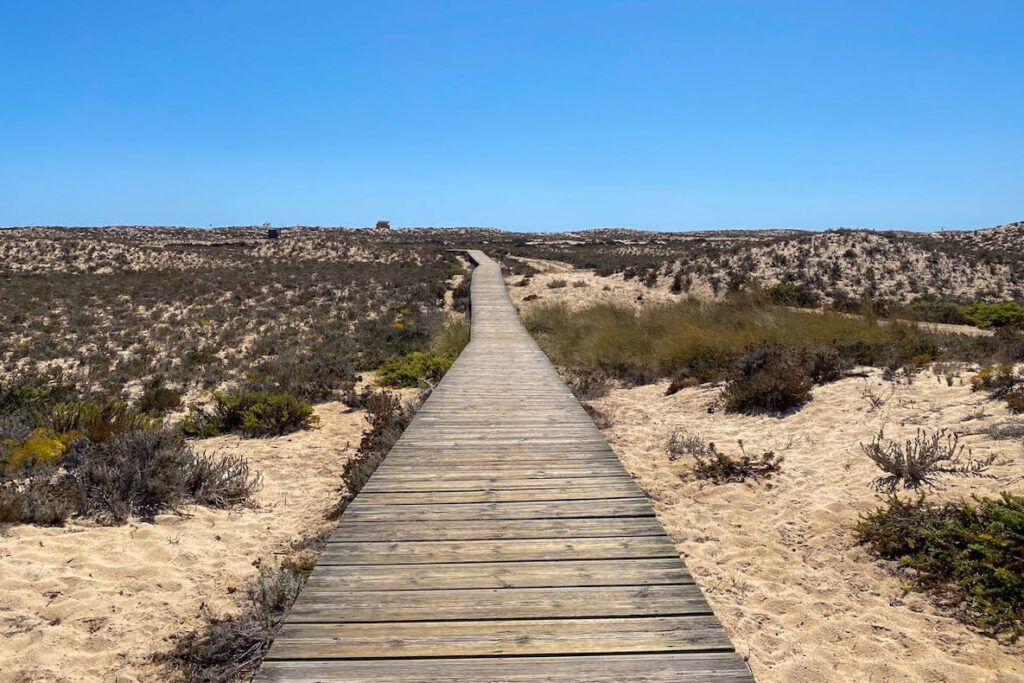
Olhão is the best base for exploring the Ria Formosa. This fishing town is just a 15-minute drive from Faro. It’s a great place to explore the natural park by boat and by foot.
There are multiple Ria Formosa boat tours from Olhão but it’s also a great starting point for hiking tours.
Even though most boat tours from Olhão don’t have a specific focus on wildlife, the guides are still very knowledgeable about the natural park and its wildlife. Most boat tours bring you to different barrier islands, once on the island you can choose between some relaxing beach time or exploring the beauty of the island on your own.
A great starting point for a hiking tour is the Marim Environmental Education Center just outside Olhão. This 0.6 square kilometer (148 acres) facility offers visitors a chance to explore a variety of habitats. If you go on a hike around the Marim Center you’ll walk through marshlands, dunes, pine forests and wetlands.
The center features an educational route with 23 stations that include bird observatories, Roman ruins, and traditional farming areas.
The site is accessible year-round, with each season offering its own unique experiences, such as plant blooms in spring and winter birdwatching.
Best Tours From Olhão
Olhão is the perfect starting point to explore the barrier islands of Ria Formosa. With this Ria Formosa 3-Island Full-Day Tour, you’ll be able to visit three different places on the islands in one day. The itinerary changes a little bit depending on the season, but all options make for a great day out exploring different sites.
Visiting Ria Formosa From Tavira
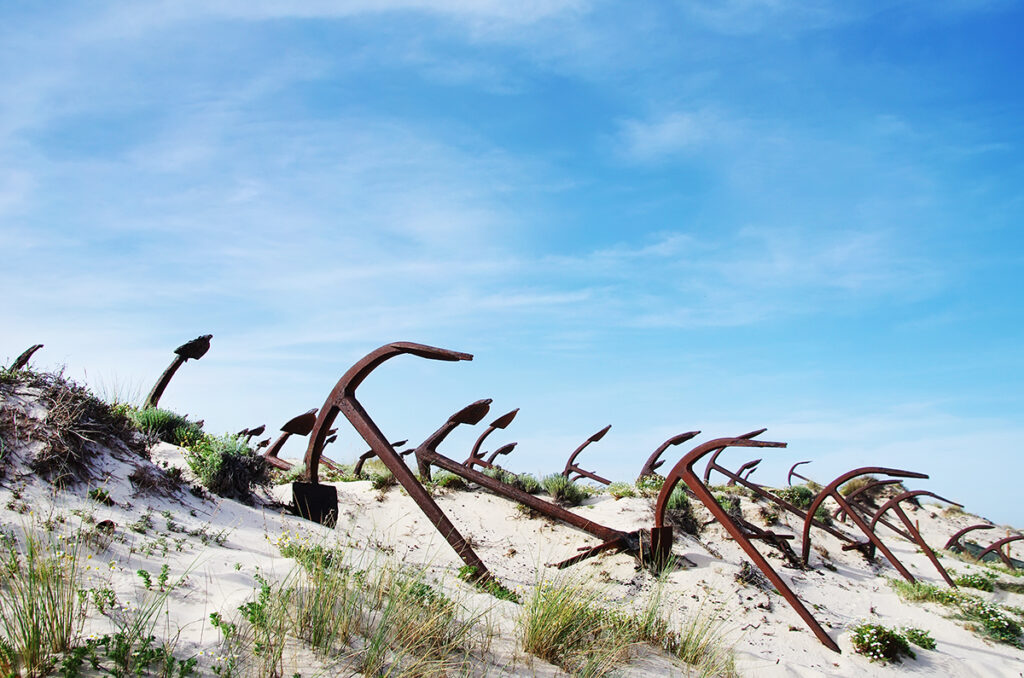
Tavira is located almost at the eastern end of Ria Formosa Natural Park. The town is easily accessible from Faro by train. Tavira itself is a charming little town, known for its historic architecture and laid-back vibe.
As great as Tavira is to explore the Ria Formosa by boat, what makes the town a special place to discover the natural park is the Trilho do Barril walking trail. This walking trail sets off in the small village just outside Tavira, Santa Luzia, and finishes at Barril Beach.
The hike to Barril Beach takes you through a diverse landscape of salt marshes, dunes, and watercourses. Along the first 600 meters, you’ll walk over a bridge and encounter unique vegetation and aquatic birds like herons and terns.
As you move further, the trail transitions from salt-tolerant plants to reeds, eventually leading to a dune area covered in low vegetation.
The trail ends at an old fishing camp near the beach, where you’ll find a cemetery of anchors and various facilities. The beach itself is home to specialized plants and is frequently visited by different species of gulls and terns.
If you want to experience this changing scenery without having to walk in the heat, you can also get a small tram to the beach. During the tram ride you can still enjoy the surroundings.
Wildlife You Can See In Ria Formosa
Ria Formosa Natural Park is a biodiversity hotspot, offering a rich variety of wildlife across different habitats. The predominant forms of wildlife are birds and marine life, but you can also find some mammals and reptiles if you’re lucky.
Birds
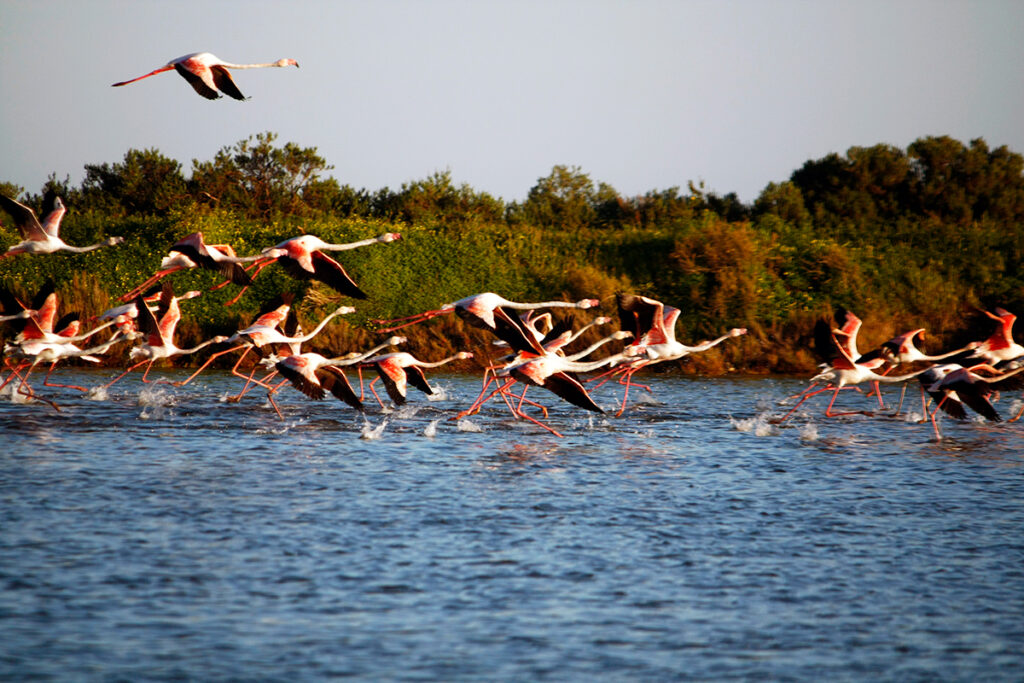
The Ria Formosa is the perfect spot for bird-watching since it’s a pit stop for many migratory birds between Europe and Africa and a permanent home for many others.
Have you ever seen a flamingo in the wild? Now is your chance! The Greater Flamingos can be found in the marshlands and near the saltpans in Ria Formosa.
The Greater Flamingos are the tallest but also the palest among the flamingo species. While you might be able to spot some flamingos year-round, most of them migrate. The best time to see flamingos is between November and March.
Other birds that can be found in the Ria Formosa are the Spoonbills, Little Egrets, White Storks, Whimbrels, Turnstones, Black-tailed Godwits, and many more.
Marine Life
The park’s unique mix of saltwater and freshwater creates a brackish environment that’s a haven for a variety of aquatic species.
From the iconic seahorses that make their home in the seagrass beds to the octopuses that hide in secluded spots, there’s a whole world to discover beneath the surface. These waters also serve as crucial breeding grounds for many species, making the park an important ecological site.
The best way you can see this impressive marine life is by going snorkeling or diving.
Once you’re in the coastal towns near the Ria Formosa you’ll also see many dolphin-watching tours. But in order to see dolphins, the boats need to venture into the Atlantic Ocean and leave the Ria Formosa Natural Park behind. So there are no dolphins in the Ria Formosa, but you can see them just beyond the barrier islands.
Mammals
While you might think a park filled with lagoons and marshlands wouldn’t have many mammals, you might be surprised that there are 34 different species of mammals. However, it’s true they’re outnumbered by fish and birds by a lot.
The park is home to the European otter, often seen in the lagoons or marshlands. Besides the otters adding a cuteness factor to the natural park, they’re a sign of a healthy ecosystem, as otters are typically found in clean, unpolluted waters.
Other mammals that can be found in Ria Formosa are badgers and genets.
Reptiles
The park is also a sanctuary for a variety of reptiles that thrive in its diverse habitats. From the elusive chameleons that master the art of camouflage to the more commonly spotted Mediterranean terrapins basking in the sun, there’s plenty to catch your eye.
The marshlands and lagoons provide ideal conditions for these reptiles, offering both food and shelter. It still might be difficult to spot many reptiles during your time in the Ria Formosa if you don’t know where to look.
While reptiles may not be the main attraction for everyone, these reptiles play a vital role in the park’s ecosystem, helping to maintain a balanced food web.
Flora In The Ria Formosa
Now, let’s talk about the green side of Ria Formosa. You know, it’s not just a playground for birds and marine life. You can also find a wide range of plants there.
The plants here have adapted to the salty seawater and some even act like Mother Nature’s own water filters, trapping pollutants.
And there are so many different plants. From salt-tolerant marshland plants to aromatic herbs in the scrublands, there’s a whole palette of plant life to admire. Plus, some of these plants are unique to the Algarve region, making them extra special.
If you’re not much for botany, besides enjoying the view of plants in pretty colors, keep an eye out for parasitic Yellow Broomrape, which adds a color splash into the marshes during summer.
Tips For Visiting Ria Formosa
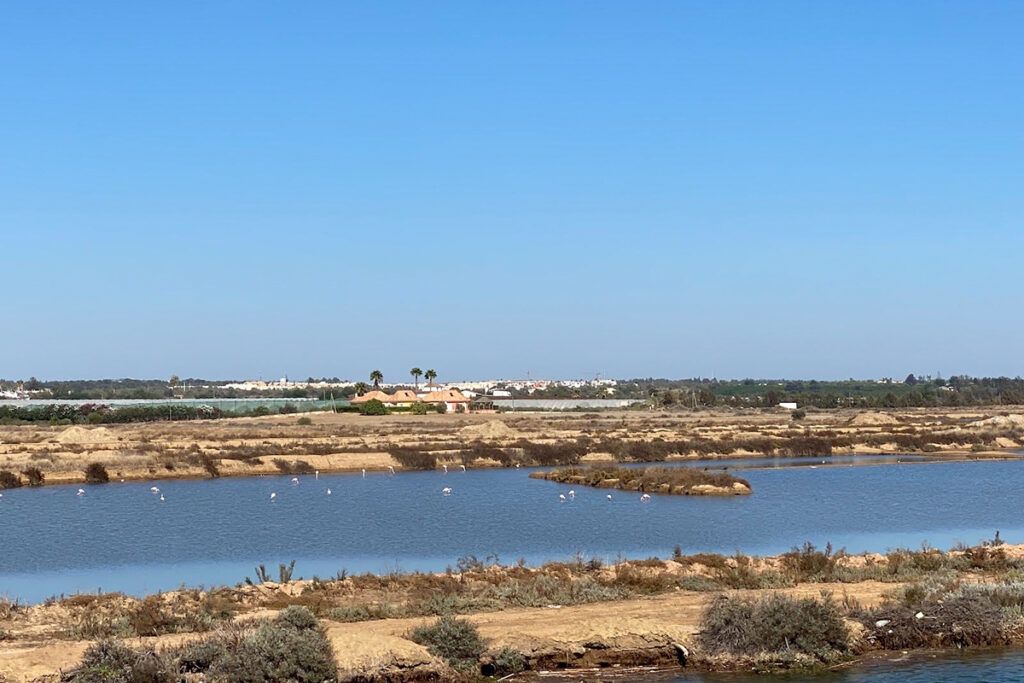
Here are some tips for visiting Ria Formosa to make your trip the best it can be:
- Best time to visit: Every season has its advantages. Winter and spring are ideal for birdwatching, while summer and fall are ideal for exploring the saltpans and beaches.
- Getting there: Faro, Olhão, and Tavira are the main gateways to Ria Formosa. Each place has its own charm and marina from where tours start.
- Boat tours: Opt for a guided boat tour to get the most out of your visit. You’ll learn about the area’s rich biodiversity from a local guide and might even spot some rare species.
- Hiking: Trails offer a close-up look at the park’s diverse habitats. Always stick to marked paths to protect the environment.
- Birdwatching: Bring a pair of binoculars, as you’ll only be able to see most birds from afar. Note, however, that some tours offer the use of binoculars, so you don’t need your own.
- Sun protection: The Algarve sun can be intense. Pack sunscreen, a hat, and plenty of water, especially if you’re visiting in the summer.
- Swimwear: Bring swimwear if you’re visiting in summer, as a dip in the ocean is the perfect way to cool down.
- Local produce: Don’t miss the chance to buy artisanal salt if you’re visiting in the summer. You can visit the salt pans and get a sustainable souvenir there that supports local industry.
- Stay informed: Visit the Marim Environmental Education Centre near Olhão to learn more about the park. It’s a great starting point for any visit.
- Respect the wildlife: Keep a safe distance from animals and plants. Remember, you’re a guest in their home.
Final Thoughts on visiting Ria Formosa
Ria Formosa is an underrated gem that offers a unique blend of natural beauty, wildlife, and cultural heritage that’s just waiting to be discovered. Whether you’re a birdwatcher, a marine life enthusiast, or simply someone looking to escape the crowds, Ria Formosa has something for everyone.
From the bustling city of Faro to the quaint fishing town of Olhão and the charming town of Tavira, you have multiple gateways to this natural wonder. Take a guided boat tour for an educational deep-dive into the park’s biodiversity, or lace up your hiking boots for an intimate encounter with nature.
Remember, this isn’t just a day trip destination. To truly appreciate the park’s diverse ecosystems—lagoons, marshlands, and barrier islands—you’ll need a few days at least. So why not make it a part of your next Algarve itinerary?
About the Author
Tina Riegelnegg is the owner of the vegan travel blog Veganderlust. She’s spent multiple months all over Portugal and most recently she spent a month in the Algarve.

